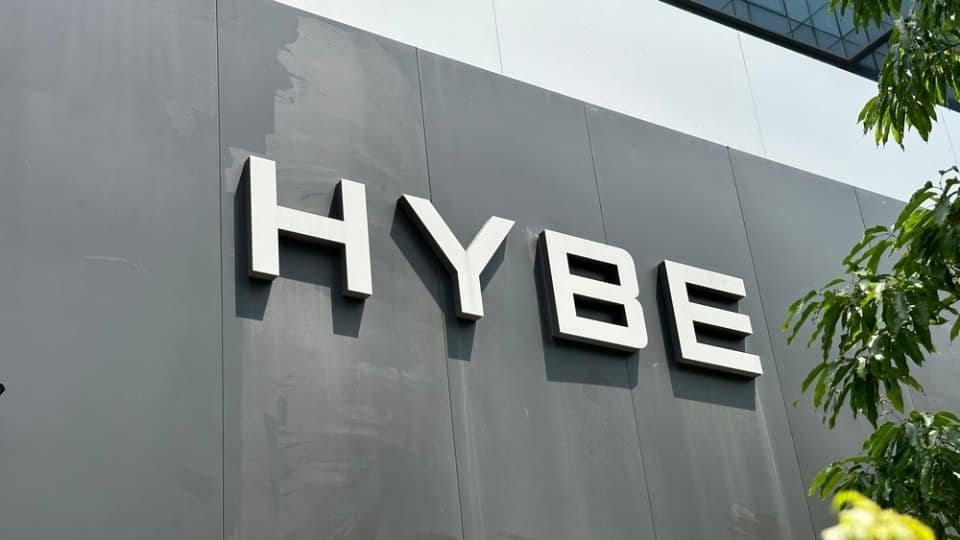If you ever want to hear a business owner rant, just grab some popcorn and casually bring up Yelp.
The mere mention of the controversial company’s name generates a range of emotions — often negative with a tinge of despair.
At best, business owners are frustrated with the volume of sales calls they receive. At worst, they are receiving many negative reviews they don’t know how to handle.
We work with many multi-location and franchise businesses daily to improve their Yelp presence, and I can definitively say that the despair is often unnecessary. Yelp is not a black box but a nuanced platform you can navigate to your advantage.
Here are five facts about Yelp that, if understood and embraced, can morph that despair into determination to turn Yelp into a positive asset that helps the business.
1. The filter is fluid
The Yelp Filter, which has been rebranded as Yelp’s Automated Recommendation Software, is the most frustrating part of Yelp for many business owners, so let’s address it first. Many reviews come into Yelp, appear on the page for a day or two, and then disappear.
These reviews are stuck down in a “not recommended” section, causing them to no longer be (easily) visible. This does not impact the overall Yelp score.
To find these filtered reviews, scroll to the bottom of the page and find the light gray text referencing them:

The filter can be a blessing and a curse. On the one hand, some of your great reviews can slip into the filter. But, on the other, some of your 1-stars might slip into it, too.
Those lost 5-star reviews are painful. However, when something slips into the filter, all hope is not lost. We know the filter is fluid, so a review that initially goes to it can be pulled back out.
While Yelp has removed much of its documentation surrounding this topic, they stated years ago that every Yelp review is automatically evaluated by Yelp’s recommendation software based on quality, reliability, and user activity on Yelp. More often than not, those useful reviews come from active members of the Yelp community.
The key phrase here — and what you can actually do something about — is “user activity.” Oftentimes, those reviewers relegated to the filter have just a handful of reviews and minimal friends on the site.
If you can identify the customer who left a positive review in the filter, you can reach out to them and let them know their great review is being hidden because they aren’t active on Yelp. Additionally, you (and other employees) can add them as friends and mark their reviews as useful and cool.
In years past, we found that de-filtering positive reviews could pull upwards of 20% of 5-star reviews out of the filter.
But more recently, the impact of these engagements has been dwindling. Even so, increased engagement with one’s profile will always stand out to Yelp in a positive light.
2. Use caution when discussing Yelp with your customers
Yelp has done a poor job in the past of communicating their policy on how businesses can ask for reviews. You’ll hear people claim, “Yelp says you can’t ask for reviews!”
And indeed, Yelp has pages on their site that indicate that position.
However, a few years back, I emailed Yelp asking explicitly if businesses can ask customers to leave a review on Yelp, and they replied

These mixed messages confuse business owners, so our advice to clients on getting Yelp reviews is to understand the policies well:
• Don’t ask anyone to review your business, be it customers, mailing list subscribers, friends, family, etc.
• Your staff should never compete to collect reviews.
• Don’t ask for reviews after requesting customer feedback in other places like surveys or contact forms. While it can be tempting to ask this of customers, it is against Yelp’s policy and unfair to other businesses.
• Don’t offer freebies, discounts, or payment in exchange for reviews—it will turn off savvy consumers and may also be illegal. For the same reason, you can’t offer incentives for users to remove reviews. Yelp has a Consumer Alerts program that publishes a pop-up alert on business pages to let people know when we learn about this sort of activity.
When you know a customer is happy, it’s very natural to verbally ask them for a review as a follow-up. We advise our clients never to ask for reviews in writing.
Even in a verbal discussion, understanding the right way to phrase this conversation when it comes to Yelp is very important because of the rules in this area above.
You may want to tell the happy customer to “check out your Yelp page” and “consider leaving feedback” instead of saying, “please go to our Yelp page and leave your 5-star review.”
It’s a big no-no to try to solicit positive reviews directly, whether it’s verbal or written via email or text message, and you should never offer an incentive in return for a review.
Lastly, avoid having customers leave a review on Yelp in your store, as the location may get their review flagged.
3. Flagging does work, and you can ask for a re-review
When a negative review comes in for a business I’m working with, I first assess the content to see if anything violates Yelp’s Content Guidelines. Not all reviews violate them, but if there is anything questionable, it is certainly worth a shot.

The Content Guidelines are short and worth understanding well. I often find myself quoting aspects of the guidelines when I flag a review and request its removal.
I look at flagging as my chance to play armchair lawyer. I’ll write a compelling case, citing evidence from the review and text from the content guidelines to build a compelling plea for removal.
If there is a violation and you’ve highlighted it well, you will receive an initial email stating, “Thanks for the report!”
This email will give you a tracking number in case you don’t hear from them with a status update, and you can always send them a follow-up with that number.

Once Yelp has decided whether to remove the content you reported, they will send one of the two follow-up emails, as seen below.


However, if you don’t agree with their final decision, you can escalate a review for further consideration by accessing Yelp’s Questionable Content page, where you can add your case number and state why you don’t agree with any comments.
Continuing the legal analogy, consider this escalated review an Appeals/Supreme Court ruling. They are likely to agree with the previous ruling, so you must make a strong case for it to be reversed.
The success rate is lower here, but they will do a re-review and reverse positions if the appeal is compelling.
4. You need to understand the environment — it is gray, not black and white
I often see business owners and marketing directors who have great angst with Yelp as a platform but don’t actually use it personally. I always encourage them to set up a profile and get active, as there is no better way to understand the platform and the mindset of its users.
As “The Art of War” says, “Know thy enemy.” (Indeed, many business owners and marketing directors consider Yelp the enemy!)
When business owners start using Yelp and leaving honest reviews, they’ll see the little things that make a big difference from a consumer experience perspective. They can now apply this new lens to their own business and make improvements so that future Yelp reviews have a better chance of being positive.
Great customer service, a generous return policy, friendly staff, cleanliness and flexibility are some common characteristics of businesses that do well on Yelp.
Taking advantage of everything Yelp offers is crucial for all business owners. Working with your Yelp rep to host Check-In offers can help to generate more reviews that will more than likely stay on the page and out of Yelp’s filter since they can see that customers were actually at this location.
Yelp encourages everyone to download and use their mobile app, which is another reason that check-in offers could help to increase the number of customer engagements on your page.
Yelp’s sales team is aggressive — sometimes too aggressive. They can drive busy business owners crazy by calling weekly to inquire about advertising on the platform. However, we’ve found that their eagerness to start a dialogue can be used in your favor.
In one instance, we worked with a company that had moved their location just a few blocks down the street. However, instead of updating their Yelp profile address, Yelp “closed” their old location page and started a new page for the new address.
This was an issue because their previous page had 50+ hard-earned reviews and a 4-star rating. We tried all of the recommended routes by Yelp to resolve this to no avail.
Then, we brought the issue up with the eager-to-help sales team, and it was fixed in just a few days. We didn’t promise the salesperson anything. We simply brought an issue to them and said that we wouldn’t discuss any advertising until something they broke with our business was corrected.
In another case, we had a business whose corporate headquarters was on Yelp. While their individual business locations might belong on Yelp, their corporate headquarters services no customers and shouldn’t really have a Yelp profile.
We tried to get Yelp to remove the page, but we were continually denied. We then explained the issue to our Yelp ad rep, and they took the page down.
If you have a problem with your Yelp profile and feel stuck, discussing it with your Yelp sales rep doesn’t hurt.
What to do next
First, get active on Yelp. If you don’t have a profile, set one up and install the mobile app. As we mentioned previously, Yelp loves to see people using the app. Begin checking into businesses and leaving reviews.
Beyond that, it pays to sit down and think through a Yelp strategy. You can do some initial triage work on existing reviews, but you should also develop a clear plan for how you will get new 5-star reviews over time. Use the Yelp improvement calculator to determine how many positive reviews you need to reach your milestones and goals.
You’ll also want to analyze your customer touchpoints to ensure they are handed in a way that would elicit positive organic reviews.
The fact is that Google’s hand has been forced (literally, by Congress) to show Yelp in the search results, so they aren’t going anywhere. You should be working on a Yelp strategy if you don’t have one already.
This article was researched and written with the help of Samantha Hughes.
Opinions expressed in this article are those of the guest author and not necessarily MarTech. Staff authors are listed here.
























































![Key Metrics for Social Media Marketing [Infographic] Key Metrics for Social Media Marketing [Infographic]](https://www.socialmediatoday.com/imgproxy/nP1lliSbrTbUmhFV6RdAz9qJZFvsstq3IG6orLUMMls/g:ce/rs:fit:770:435/bG9jYWw6Ly8vZGl2ZWltYWdlL3NvY2lhbF9tZWRpYV9yb2lfaW5vZ3JhcGhpYzIucG5n.webp)


















